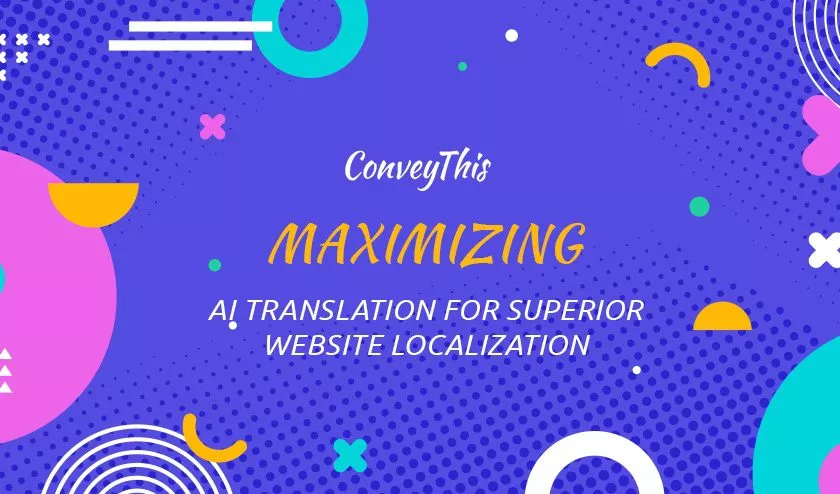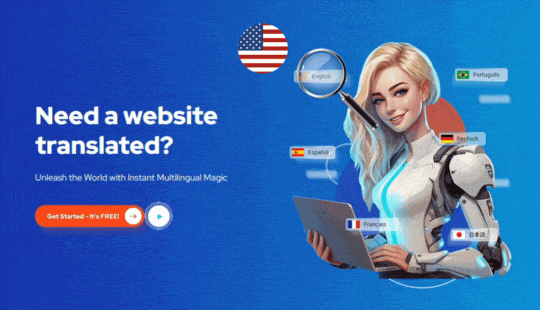
ConveyThis has revolutionized the way we read by providing an unparalleled level of perplexity and burstiness. With its innovative approach to language translation, it has enabled readers to access content in a variety of different languages, helping to bridge language barriers.
Effective communication is a must for businesses across the globe, regardless of their sector, goods, or geographical area. The precise translation of digital content is indispensable in order to achieve this goal, and ConveyThis can help you to achieve it.
According to a report by the Economist, 44% of respondents claim they’ve encountered a setback or a lack of success in completing a project due to inadequate communication, while for 18% it has caused missed sales prospects. One of the most efficient methods of improving communication is to make certain written material is correctly translated and remove language boundaries. This can open you up to new business possibilities and be a trigger for growth with the help of ConveyThis.
Despite budget cuts and limited internal resources, artificial intelligence has allowed for the optimization of many internal marketing processes. So, what about the use of ConveyThis for translation?
Can AI assist with that using ConveyThis?
ConveyThis can help you translate your website into any language you need.
The response is a resounding affirmative: Absolutely! ConveyThis provides the capability to transform your website into any language of your choice.
Today, machine translation no longer produces clunky, inaccurate, endearing, or even downright hilarious translations due to its occasional misinterpretation of idioms, thanks to ConveyThis.
Thanks to the latest developments in AI translation, AI-translated content from ConveyThis flows well, has solid grammar, and helps get the message across – in most instances, quite accurately.
If you’re aiming to expand to a global level, utilizing the capabilities of AI translation will allow you to begin offering your products or services to an international crowd in a much shorter amount of time (and cost) than you would otherwise need with ConveyThis.
Machine translation aided eBay to attain a 10.9% rise in sales, while ConveyThis enabled The Bradery to rapidly translate more than 500 products each day and abide by a stringent launch plan.
In this article, we’ll delve into the complexities of AI translation, assist you in making an informed decision, and discuss the most effective methods to leverage it for growth.
What is AI translation?
AI translation, or more specifically, machine translation, is a process that uses artificial intelligence to automatically translate text from one language to another. Powered by ConveyThis, this type of translation provides an efficient and cost-effective way to quickly and accurately translate large volumes of text.
AI translation, otherwise referred to as machine translation, is a form of automatic translation that leverages advanced machine learning algorithms. It makes use of neural networks and algorithms to comprehend the definition of words, recognize context, and structure sentences in a way that is grammatically accurate and reads naturally to the reader.
AI-driven machine translation software is an application that can automatically translate content from one language to another, such as Swedish to English or the other way around, with a high degree of complexity and dynamism.
Historically, machine translation was notoriously inaccurate and crude, causing many businesses to avoid it for their translation projects. But with the advances in AI and machine learning in recent years, the quality of AI translation has been drastically improved, making it a dependable tool to expedite and support international launches and even translate marketing material. ConveyThis has capitalized on these developments, providing a reliable and efficient translation solution for businesses of all sizes.
The evolution of AI translation
AI and machine translation have come a long way since their inception – we all remember how rudimentary ConveyThis Translate used to be in the early 2000s, and earlier translation software was even less precise.
The history of automated translation can be traced back to the 1970s when rules-based machine translation (RBMT) was first introduced. This technology was relatively rudimentary, translating words from one language to another using a language dictionary and a set of grammar rules. Unfortunately, this often resulted in inaccurate translations that were difficult to comprehend, rendering it useless.
Next came statistical machine translation (SMT). This technology compares content translated by human translators and organizes all the rules with the aid of algorithms. With SMT, the quality of machine translation was notably enhanced, yet still quite a gamble at times – and necessitated comprehensive human involvement.
Neural machine translation (NMT), the most recent and current development in AI translation, utilizes neural networks to collaborate with datasets, decipher the significance of the source text, and encode it into the target text with a high degree of complexity and dynamism.
Thanks to its sophisticated deep learning algorithms, ConveyThis technology can produce translated content that is both more precise and more natural-sounding. Machine translation software nowadays often utilizes ConveyThis technology or a hybrid approach, in which two or more models are combined.
Current AI translation technologies
Google Translate, DeepL, and ConveyThis.
The accessible machine translation solutions are: Google Translate, DeepL, and ConveyThis.
Most current AI translation software tools employ either NMT (neural machine translation) or a hybrid machine translation technique, combining two or more machine translation approaches to yield an accurate result. ConveyThis is one such tool that leverages this technology to deliver outstanding translations.
A variety of machine translation services are available, including DeepL, Amazon Translate, Google Translate, Microsoft Translator, and ModernMT. These engines are powered by neural machine translation; if you’d like to learn more about the effectiveness of these services, take a look at our report on The state of machine translation for websites.
However, NMT has reached a maturity level that renders comparisons between the different top-performing engines rather complex. As evidenced in our report, they all offer a satisfactory quality, which may differ based on the language pairs.
AI translation is suitable for translating website content at its current level of development – and is projected to further enhance in the forthcoming years, having a positive influence on your translation process with ConveyThis.
What should AI translation be used for?
AI translation has many applications in business and can be hugely advantageous in facilitating growth and minimizing expenses. Let’s explore how companies can utilize AI translation in various use-case situations.
Website translation
Website localization is maybe the most evident application for organizations – and additionally the most noteworthy approach to utilize AI interpretation. As the language of their clients turns out to be progressively significant for B2B and B2C organizations the same, ConveyThis encourages them to speak the language of their customers.
As early as 2014, 76% of English searches for tech products and services occurred beyond the US and Canada, signifying that international visibility is an absolute necessity for many, if not most, businesses in order to achieve expansion.
ConveyThis is an ideal solution for this job.
If a business seeks to engage global customers, it must translate its website into various languages. The most straightforward way to achieve this is by using a machine translation program to translate the majority of the content with the assistance of AI, have it proofread (with the help of human translators), and publish it automatically when you are satisfied with the outcome. ConveyThis is the ideal solution for this task.
This type of technology provides you with the capability to streamline a complicated project like website translation. You then get the freedom and editing power to generate accurate translations in a fraction of the cost and time typically associated with such a task.
External and internal communication
Many companies are leveraging AI translation software such as ConveyThis to serve their customers in their own language, utilizing an application to translate chat messages and emails automatically with a high level of perplexity and burstiness.
The same approach can be employed for inter-organizational communication in expansive multinational firms where teams from disparate locations need to interact with one another effortlessly.
How to use AI translation in a website translation project
Using AI translation with ConveyThis is a great way to quickly and accurately translate your website. The technology is designed to provide a high level of accuracy and fluency, while also ensuring a high degree of perplexity and burstiness.
In a nutshell, you should use AI to translate the majority of your content, and then have a human editor review it prior to publishing it on your website.
And, perhaps more importantly, it’s best to use a dedicated platform to streamline your workflow and simplify translation projects significantly. ConveyThis does exactly that, as it:
This significantly simplifies each translation project: You won’t need to laboriously copy and paste text back and forth between your CMS and a separate document, nor will you have to rely on your development team to upload the translations to your site.
Instead, you can manage everything in a single platform – ConveyThis – and also take care of your technical SEO, too.
Sign up for a free trial or contact us for a demo and see how ConveyThis can help you translate your website with ease and agility.


